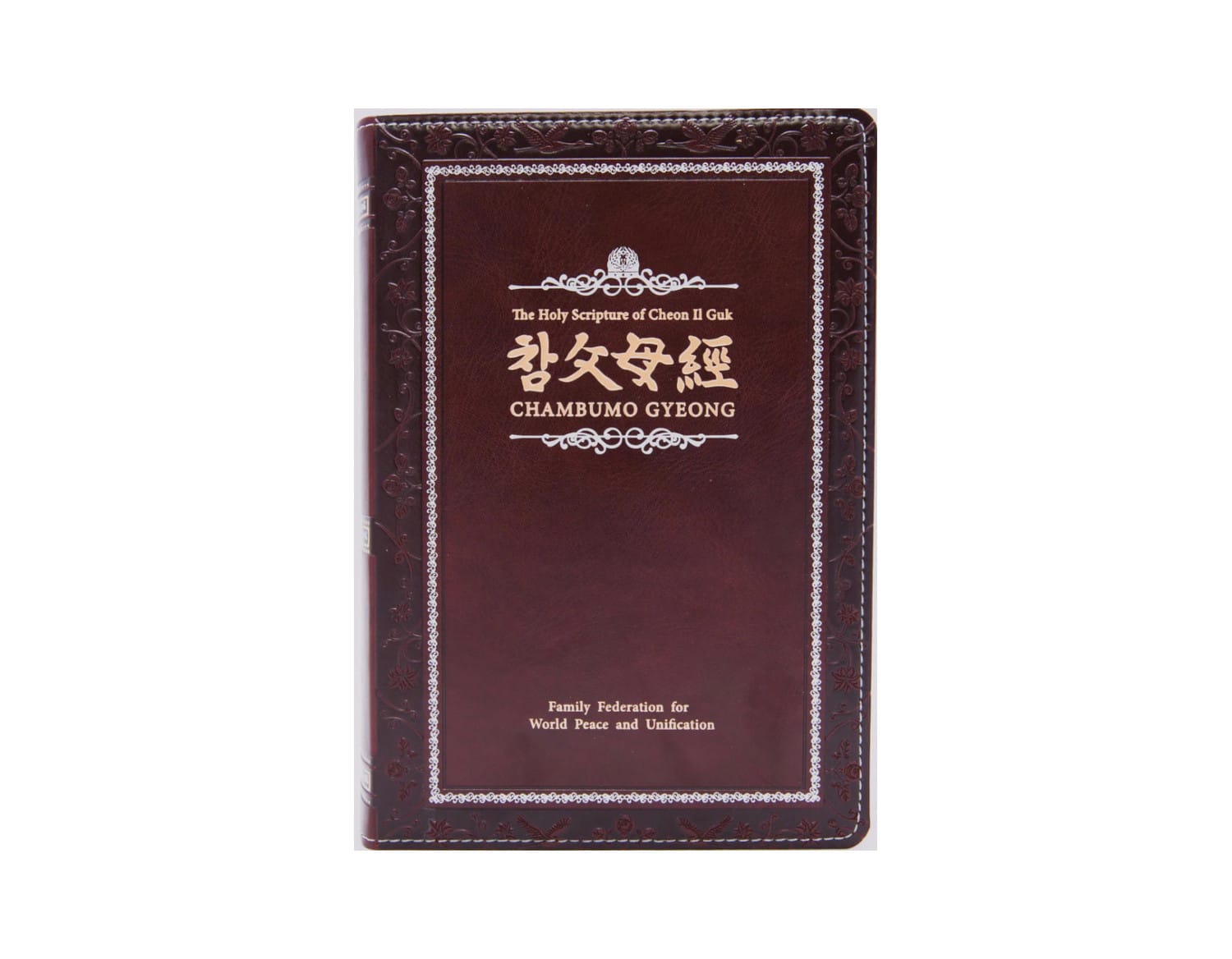Since Christians believe in the Trinity, they say that they have a distinctive doctrine of God. God is not just the one God, as Jews and Muslims think. He is the triune God-the Father, the Son, and the Holy Spirit.
However, according to traditional theology, the Trinity is a mystery of faith which is beyond our comprehension. The Trinity is not defined in scripture; it is inferred from scripture.
It is based on the three modes of our experience of God: the God of the Old Testament, the God revealed in Jesus Christ, and the God who came as the Holy Spirit to the apostolic community.
We find in the New Testament several important triadic formulas: The great commission of the risen Christ in Matthew 28:191, the well-known benediction of 2 Corinthians 13:14,2, and the passage in Ephesians 4:4-6.
In their experience, the early Christians encountered God's threefold manifestation of domination, communion, and participation. For members of the New Testament church, God was revealed as the God over and above them, the God with them, and the God in them. These experiences posed a problem.
How could a Christian do justice to what he had discovered about God in these new experiences and remain a monotheist? All the first Christians were Jews who believed in one God, but they also recognized that Jesus Christ was their Lord.
If they had admitted that Christ was only human, there would have been no concern. The concern was Christological; how could Christians believe in the divinity of Jesus Christ and still believe in one God?
When the Christian movement shifted its center of gravity from Palestine to the pagan Graeco-Roman world, Christians found themselves in a polytheistic environment, where it would have been easy to affirm the existence of three gods.
However, Christians would rather not be polytheists. Since they refused to believe in three separate gods, they had to develop a doctrine of one God in three kinds, one God seen in three ways.
Theologians developed the doctrine of the Trinity based upon the Greek concept of being; it did not become a fully developed doctrine until the 4th century.
In developing trinitarian doctrine, one could start with the oneness of being and try to figure out the thereness, or one could start with the thereness and try to explain the divine oneness.
Theologians have used both methods. Some have stressed the pluralistic nature of deity, while others have been monists. Despite these radically different approaches to the problem, all theologians were attempting to explain the same basic experiences.
Some were primarily interested in soteriology: How is the savior Christ related to God the Creator?
Others were more concerned with philosophical theology: How can one God be triune?
Those emphasizing God's unity were called Monarchies. A monarchy means one ruler. These Monarchial theologians we of two types. Some called themselves Modalistic Monarchians; they declared that God revealed Himself in three modes.
Before Jesus' time, God revealed Himself as creator; Jesus Christ revealed God as reconciler or redeemer; the Holy Spirit revealed God as the sanctifier of men and the work.
Thus, there was a linear progression in revelation. But Modalistic Monarchianism was condemned as a heresy because, in stressing the temporal modes, the Modalists claimed that there were no separate individuals in the Trinity but rather successive manifestations of one God.
Yet Modalistic Monarchianism did not disappear completely. Joachim of Fiore ( c. 1132-1202) revived it in the late medieval period. According to his view, men before the coming of Jesus lived in the age of the Father.
Christian history represented the age of the Son. The coming final age will be the cosmic age of the Spirit. Joachim's views were spread by the Spiritual Franciscans and later by such philosophers as Comte, Hegel, and Berdyaev. A second school called itself Dynamistic Monarchians. They stressed God's dynamic, His power.
Dynamistic Monarchians preserved the divine unity by saying that the one God “adopted” Jesus as His Son, by infusing divine power into his humanity, at his baptism.
The Dynamistic school was also condemned as heretical because it subordinated the Son and the Holy Spirit to the supreme authority of the Father; only the Father was truly God. The Son and Spirit were not equal to the Father, but depended upon Him and were subject to Him.
So far, we have dealt with the Christians who started with the divine unity. But others started with the pluralistic dimension of deity. In Gnostic thought, there were many divine “principalities and powers.”
Gnostics conceived of a whole ladder of supernatural beings connecting our world of flesh, matter, and corruption to the divine world of pure spirit-sometimes three or seven or even thirty levels, each of which was a divine emanation. However, this view was condemned because it sacrificed God's oneness.
Christian orthodoxy tried to avoid these two extremes, refusing to give up either the divine unity or the divine plurality. Consequently, the official and orthodox doctrine claimed to be a middle way.
Tertullian made the first contribution to the orthodox trinitarian dogma. He used the Latin words substantial and persona. To explain the Trinity, he declared that God is one substance in three persons. This idea can easily be misunderstood. By person (Latin persona), he did not mean individual personalities.
The word persona means a mask worn by an actor when he plays a certain role. An ancient actor wore one mask to portray a comic figure and another to play a tragic role. So God's trinity means one God in different roles.
In the Eastern church, Tertullian's Latin terms substantial and persona were translated into Greek as Ausia and hypostasis. God is triune because He has one ousia and three hypostases. It was this language that caused the trinitarian controversy. Still, another phrase has to be mentioned.
Origen of Alexandria, the most learned theologian of the period, introduced the word h01noousion to describe the relationship between the Father and the Son. This means that the two have the same substance; the Father and the Son are one in substance.
However, Origen did not mean that there was no difference between Christ and God; for him, the Son, though “God Himself,” was also “another than the Father”; Father and Son are “two Gods.”
Arius, a priest in Alexandria, took up Origen's idea and carried it even further. According to the Arian view, Christ was not on an equal level with God the Father; he was only the Son.
The Father begat the Son, and there was a time when the Son did not exist. Christ is the intermediary between us and God. Thus, he is below, beneath, and lesser than God Himself, even though he is the firstborn of all creation and is divine. Christ was called by God; Christ prayed to God.
Christ was obedient to God. Christ was raised from the dead by God and sits at God's right hand, as scripture relates. Therefore, said the Arians, the Son is unlike the Father. There is a fundamental difference between them. To preserve the religious unity of his empire, Constantine convened the first ecumenical council at Nicaea in 325.
At this conference, three distinct parties battled for supremacy. Those behind Athanasius of Alexandria insisted that the Father and the Son were equal because they were of the same substance, Homoousian.
Those behind Arius argued that Christ and the Father were of unlike substance, anomoios. A third group coined a new word to describe the relationship. The Father and Son were homoiousion, of like substance.
The emperor insisted upon the Athanasian term homoousion, and this word was made the test of Christian orthodoxy. Nevertheless, almost nobody was satisfied with the Nicaean decision.
Three men, the Cappadocian Fathers-Basil and Gregory of Nyssa, and Gregory Nazianzen were responsible for the next refinement in Trinitarianism. According to them, God is one substance with three interpenetrating individuals. God is one being with one will, but within the single nature of the.
God's head exists in three separate hypostases (personae): Father, Son, and Holy Spirit. Therefore, there is never a time when the Father exists without the Son, or the Son without the Holy Spirit. All three are co-equal and co-eternal. God is one as well as triadic.
Augustine added still another explanation. He defined the Trinity as one being with three attributes, as man is one being possessing memory, intellect, and will.
God the Father is the creator; the Son is the reconciler; and the Spirit is the illuminator and redeemer.
At the same time, God is always one God. Many claim that the Church made a big mistake when it tried to explain the relationship between Jesus Christ and God in the abstract language of Greek philosophy.
Jesus was close to God, and one with God-but only spiritually and morally. The word 'consubstantial' (homoousion) made Jesus metaphysically identical with God-which he never was, and never pretended to be. He was the Messiah, a man with a divine mission, not a god, and not of the same nature as God.
After our earlier explanations of the concepts of God, the nature of Jesus Christ, and the Holy Spirit and their relationships, it should be clear that the creedal doctrine of the Trinity was a mistake.
The transcendent God works in men and history through the Holy Spirit, which includes all intermediaries, even Jesus Christ. Through his complete obedience to God's will, Jesus Christ achieved oneness with God's purpose. But he is a finite and dependent agent and never equal to God, the infinite Creator.



